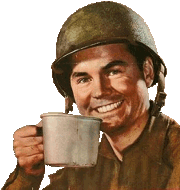
Help via Ko-Fi
Folks Used to Believe: Conceptions of Diety
by Alvin F. Harlow
THE early Christian artists were very careful to avoid any representation of God in their paintings or sculpture. For example, He is only symbolically indicated by a hand stretched out to stay the knife of Abraham from Isaac, issuing from the clouds to give the tables of law to Moses, or holding a crown over the head of Christ, the Virgin or the saints. In a Greek painting executed as late as the Eighth Century, the souls of the righteous in a state of beatitude are represented by five infant figures in a gigantic hand thrust out from the clouds.
It was not until the Ninth or Tenth Century that artists dared to paint their ideas of the personal appearance of God. At first a head alone was pictured—for instance, a winged head with a cruciform halo, surrounded by numerous stars, uttering the word FIAT, which calls the earth and its inhabitants into being. Later on, the bust began to be drawn amid the clouds, and finally the whole body.
The Almighty was pictured variously as the God of Battles, armed with sword and bow, as a king or an emperor, or in Italy oftenest in the vestments of a pope. A window at Troyes, France, shows Him as a bearded papal figure, throned in glory, crowned with a quintuple tiara and robed in alb and tunic, even with the papal slippers.
Most of the artists conceived great age in His appearance. As the "Ancient of Days," He is shown as a feeble old man, bowed by the weight of years, leaning heavily on a staff or even reposing on a couch after the labors of creation. One picture of the Creation represents Him as a tottering old man in ecclesiastical vestments and with a lantern in His hand.
With the degradation of taste in the Middle Ages, the conceptions were often coarse and even imbecilic. Attempts to picture the Trinity were made in grotesque figures with three heads, or a head with three faces joined together. In other examples, the Trinity is represented by three stiff, aged figures, the Father, Son and Holy Ghost being identified by the tiara, the cross and the dove. The three figures arc enveloped in one common robe, and are jointly crowning the Virgin Mary in Heaven, her train being borne by angels.